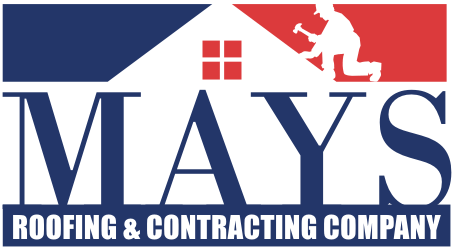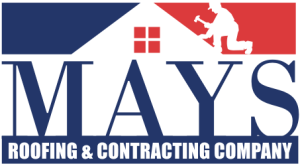How to Create a DIY Roof Inspection Routine for Every Season
Regular roof inspections are vital for maintaining the integrity of your home. Seasonal changes can put your roof under stress, making it essential to understand how to inspect it effectively throughout the year. A well-configured DIY roof inspection routine predominantly enhances your roof’s lifespan and protects your investment. This article outlines a step-by-step guide for conducting seasonal roof inspections effectively.
The Importance of Seasonal Roof Inspections
Roof inspections enable homeowners to detect issues early, potentially saving substantial amounts on repair costs later. Each season presents unique challenges that can impact your roof’s condition. By scheduling a regular inspection routine, you ensure that your roof remains in optimal condition, regardless of the weather.
Benefits of Seasonal Inspections
- Extended Lifespan: Regular inspections help identify potential problems early, allowing for prompt repairs.
- Preventative Maintenance: Knowing the state of your roof allows you to tackle minor issues before they escalate.
- Insurance Compliance: Regular checks can fulfill requirements set by insurance providers.
- Increased Energy Efficiency: A well-maintained roof ensures better energy efficiency, reducing your utility bills.
Spring: A Time for Renewal
Spring is an excellent time to inspect your roof for winter damage. The melting snow can reveal underlying issues that may have gone unnoticed.
Key Inspection Points:
- Check for Ice Dams: Look for any signs of ice dams, which can cause leaks as they melt.
- Inspect Shingles: Examine shingles for peeling, curling, or missing sections.
- Gutters and Downspouts: Ensure that they are clear of debris and operating correctly.
- Flashing Inspection: Check metal flashing around chimneys, vents, and skylights for signs of rust or gaps.
Spring inspections set the stage for necessary repairs, enhancing your roof’s durability going into summer.
Summer: Keeping It Cool
Summer offers a unique opportunity to keep your roof cool by ensuring ventilation and sunlight exposure are optimal.
Key Inspection Points:
- Heat Damage: Check for blistering or discoloration on shingles that indicate heat exposure.
- Ventilation: Ensure that attic vents are operational to prevent overheating.
- Check for Mold: Inspect for roof mold or algae growth, which can compromise your roof’s materials.
- Tree Limbs: Trim back any overhanging branches that could drop debris onto your roof.
Addressing these aspects in summer guarantees your roof can withstand the intense sun and heat.
Fall: Preparing for Winter
As leaves begin to fall, it’s crucial to prepare your roof for winter conditions.
Key Inspection Points:
- Clean Gutters: Remove debris from gutters to ensure proper drainage through the winter.
- Inspect Underneath shingles: Look for signs of water pooling or leaks inside your home.
- Seal and Repair: Make any necessary sealant repairs, particularly around flashing and vents.
- Assess the Roof Structure: Walk the roof to check for sagging areas that may indicate structural problems.
Fall inspections help secure your roof heading into the harsh elements of winter, safeguarding your home effectively.
Winter: Risk Assessment
During winter, inspections can be challenging, yet they are equally important. Snow accumulation and icy conditions can hide underlying problems.
Key Inspection Points:
- Structural Load: Ensure that your roof can bear the weight of snowfall.
- Check for Leaks: Look for water stains on ceilings that might indicate roof leaks.
- Ice Buildup: Monitor for excessive ice accumulation along the eaves that could damage shingles.
- Inside Inspection: Inspect the attic area for condensation or moisture, which can signal ventilation issues.
Winter inspections provide critical insights into how your roof is handling the season’s demands.
A Step-by-Step Inspection Process
Regardless of the season, follow these steps for a thorough roof inspection:
Preparation
- Safety First: Always prioritize safely accessing your roof. Use a sturdy ladder and consider employing safety equipment.
- Gather Tools: Have a pair of binoculars, a flashlight, and a camera for documentation.
Visual Inspection
Conduct a thorough visual inspection of the roof. Look for any visible issues such as sagging, missing shingles, or discoloration. Using binoculars from the ground level can also provide a clear view without risking safety.
Detailed Inspection
Inspect specific areas closely:
- Flashing and Vents: Ensure all the flashing is intact and check the condition of vents.
- Roofing Materials: Examine the shingles, tiles, or metal panels for wear.
- Gutters: Assess gutters for blockages and repairs, ensure the downspouts direct water away from the foundation.
Post-Inspection Documentation
After completing the inspection, document your findings. Take photographs of any problematic areas and note them for further reference. This documentation can be invaluable for repair planning or insurance considerations.
When to Seek Professional Help
After a DIY inspection, there may be instances when professional assistance is required. Signs such as significant shingle curling, extensive ice dam formations, or any form of structural sagging should prompt a consultation with a roofing expert.
Conclusion
Creating a DIY roof inspection routine for every season enhances the longevity and health of your roof. By following a structured inspection plan, you can identify problems early, mitigate potential damages, and save on costly repairs. Remember, preventive action is essential in maintaining the integrity of your home. Regular inspections will give you peace of mind, knowing that your roof is prepared to face the elements of each season.





 Mays Contracting
Mays Contracting


